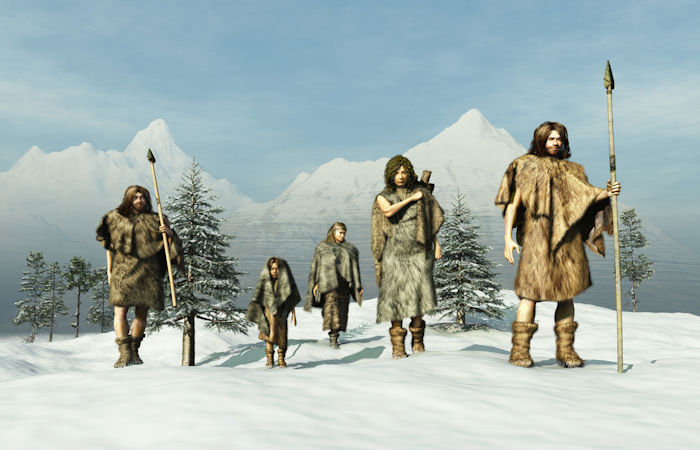North America’s First People May Have Arrived By Sea Ice Highway 24,000 Years Ago
One of the hottest debates in archaeology is about how and when humans first arrived in North America. Archaeologists have traditionally argued that people walked through an ice-free corridor that briefly opened between ice sheets an estimated 13,000 years ago.

But a growing number of archaeological and genetic finds—including human footprints in New Mexico dated to around 23,000 years old—suggests that people made their way onto the continent much earlier. These early Americans likely traveled along the Pacific coastline from Beringia, the land bridge between Asia and North America that emerged during the last glacial maximum when ice sheets bound up large amounts of water causing sea levels to fall.
Now, in research to be presented Friday, 15 December at the American Geophysical Union Annual Meeting (AGU23) in San Franciso, paleoclimate reconstructions of the Pacific Northwest hint that sea ice may have been one way for people to move farther south.
The idea that early Americans may have traveled along the Pacific Coast isn’t new. People were likely south of the massive ice sheets that once covered much of the continent at least 16,000 years ago.
Given that the ice-free corridor wouldn’t be open for thousands of years before these early arrivals, scientists instead proposed that people may have moved along a “kelp highway.” This theory holds that early Americans slowly traveled down into North America in boats, following the bountiful goods found in coastal waters.
Archaeologists have found evidence of coastal settlements in western Canada dating from as early as 14,000 years ago. But in 2020, researchers noted that freshwater from melting glaciers at the time may have created a strong current that would make it difficult for people to travel along the coast.
Ice highway over dangerous water
To get a fuller picture of ocean conditions during these crucial windows of human migration, Summer Praetorius of the US Geological Survey and her colleagues looked at climate proxies in ocean sediment from the coast. Most of the data came from tiny, fossilized plankton. The abundance and chemistry of these organisms help reconstruct ocean temperatures, salinity, and sea ice cover.
Praetorious’ presentation is part of a session on the climate history and geology of Beringia and the North Pacific during the Pleistocene, the current ice age, at AGU23.
The week-long conference has brought 24,000 experts from across the spectrum of Earth and space sciences to San Francisco this year and connected 3,000 online attendees.
Praetorious’ team used climate models and found that ocean currents were more than twice the strength they are today during the height of the last glacial maximum around 20,000 years ago due to glacial winds and lower sea levels. While not impossible to paddle against, these conditions would have made traveling by boat very difficult, Praetorius said.

However, the records also showed that much of the area was home to winter sea ice until around 15,000 years ago. As a cold-adapted people, “rather than having to paddle against this horrible glacial current, maybe they were using the sea ice as a platform,” Praetorius said.
Arctic people today travel along sea ice on dog sleds and snowmobiles. Early Americans may also have used the ‘sea ice highway’ to get around and hunt marine mammals, slowly making their way into North America in the process, Praetorius said. The climate data suggest conditions along the coastal route may have been conducive to migration between 24,500 and 22,000 years ago and 16,400–14,800 years ago, possibly aided by the presence of winter sea ice.
While proving that people were using sea ice to travel will be tricky, given most of the archaeological sites are underwater, the theory provides a new framework for understanding how humans may have arrived in North America without a land bridge or easy ocean travel.
And the sea ice highway isn’t mutually exclusive with other human migrations further down the line, says Praetorius. The team’s models show the Alaskan current had calmed down by 14,000 years ago, making it easier for people to travel by boat along the coast.
“Nothing is off the table,” she said. “We will always be surprised by ancient human ingenuity.”